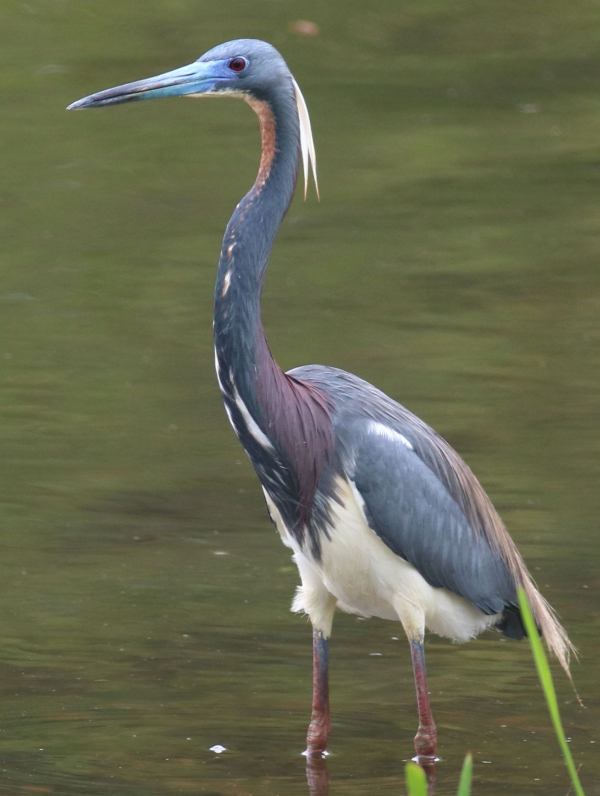
A Tricolored Heron in season with breeding colors and plumes is a real prize for anyone to photograph.
|
Wading birds – primarily species among the herons, egrets, ibis, storks, cranes, and spoonbills – are great birds for beginners to interact with, camera in hand. They are large, relatively common in their normal ranges, and they are sometimes quite approachable. Advanced bird photographers are always happy to encounter wading birds because they are impressive photo subjects that can be photographed hunting, fishing, and catching prey, or mirrored in calm water, emerging from tall vegetation, and during a variety of nesting activities.
Especially along the Gulf Coast, many wading bird nesting colonies are beginning to enliven more as the nesting season approaches. Through the following months photographers can document a variety of activities from a safe distance – recording birds in flight during nest building, food gathering, performing mating displays, incubating, tending nestlings, and eventually sharing the shallows with fledglings. Nesting colonies are sometimes species specific, but many have a dominant species with other wading birds sharing colony nest sites. Any photographer can take impressive images of a number of species if you find the right locations with the right lighting conditions, and the edge of a nesting colony is a great place to practice photo skills in the field with a lot of action as the birds fly this way and that.
To photograph large wading birds along wetland shallows or in flight, you will have the best results when you use a zoom lens to compose photos of the action. A 100-to-400mm zoom lens might be the best bet, but whatever zoom you have is best for you. The action of physically zooming the lens adds another dimension to your photography, but with a little practice, you will surely appreciate the versatility a zoom lens provides when photographing large wading birds at relatively close quarters.
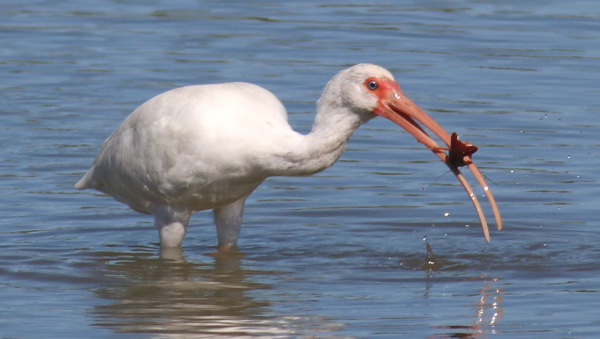
Documenting a hunt in a series of photographs can produce a photo like this White Ibis as it secures a crayfish above water. By positioning your camera near water level your photos provide the perception that the viewer is part of the scene.
Even when photographing a single bird, say a Great Blue Heron stalking through shallow water, you can take a variety of photos – full frame as it steps cautiously through clam blue water, as it bends its neck downward. Then zoom in to focus on the bill, head, and neck; then zoom out a bit to include the shoulders, just as it strikes at a fish and you record the action of the splash and as the heron retracts with a struggling fish in its bill. Zooming is an option when photographing birds in flight too. Take a series of images as a Great Egret flies by, recording the bird’s flight with wings up, then down; and zoom closer to get just the front of edge of the wings and emphasizing the head and bent neck.
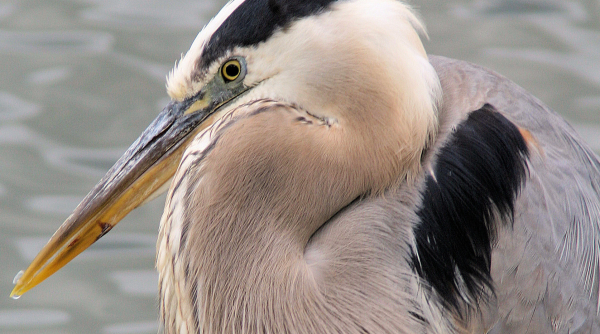
In close quarters, a zoom lens permits you to compose images that feature the natural design elements of the plumage and face of wading birds like this Great Blue Heron. In this case, even more than usual, focusing on the eye is a must.
Keep your telephoto lens handy too though, especially if you’re photographing a nesting colony from a distance, or if the spoonbills are staying beyond your zoom’s reach. Then too, where you find wading birds, you often find a variety of other birds to photograph, including smaller shorebirds, maybe a rail, some passerines, a few ducks – maybe an Osprey flyby.
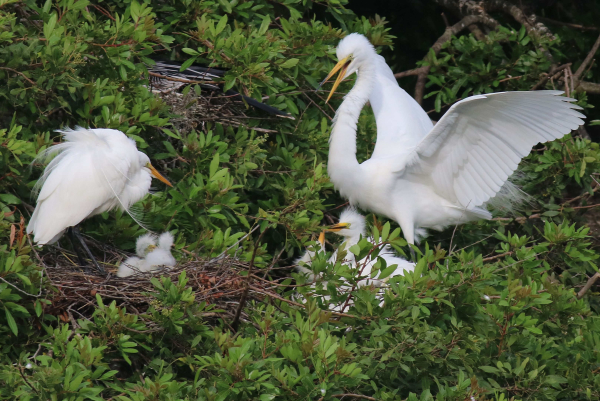
The safety and well-being of nesting birds comes first, but with a telephoto lens you should be able to photograph the action at a nesting colony without disturbing the birds, such as these Great Egrets.
The thing about wading birds is that there is an interesting variety to photograph, including Tricolored Herons, Reddish Egrets, Wood Storks, Green Herons, White Ibis, Little Blue Herons, Snowy Egrets – what fun they all are to search out and photograph. Take your time, spend an extended period with a wader when you can – you never know what might happen next. Soon many wading birds will begin getting enhanced breeding colors on their bare facial skin and growing lacy plumes to display as they engage in pre-nesting behaviors and begin the nesting season.
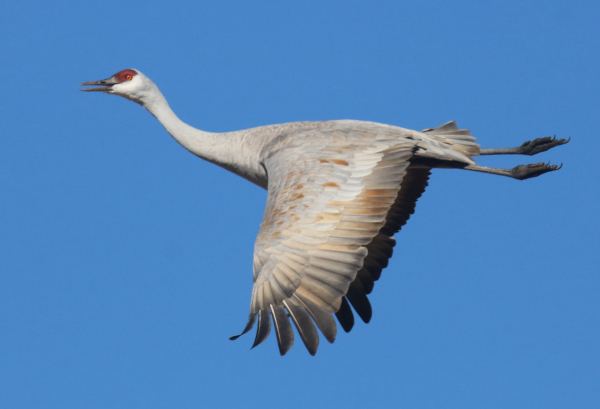
Taking photographs of wading birds in flight can yield impressive images, and when you can take a photo that combines a flying Sandhill Crane performing a spirited flight display while calling, it provides a wading bird photo trifecta.
Wading birds across the sunbelt provide birders with photo opportunities throughout the year, and soon they will provide photographers with flashes of spring behaviors and nesting drama during the coming months. As spring breaks, northern wetlands will see the return of migrating wading birds too. Be sure you have your camera ready, your shadow pointing toward the birds with the sun at your back – and enjoy all your opportunities to photograph wading birds – winter, spring, and year-round.
Article and photos by Paul Konrad
Share your bird photographs and birding experiences at editorstbw2@gmail.com